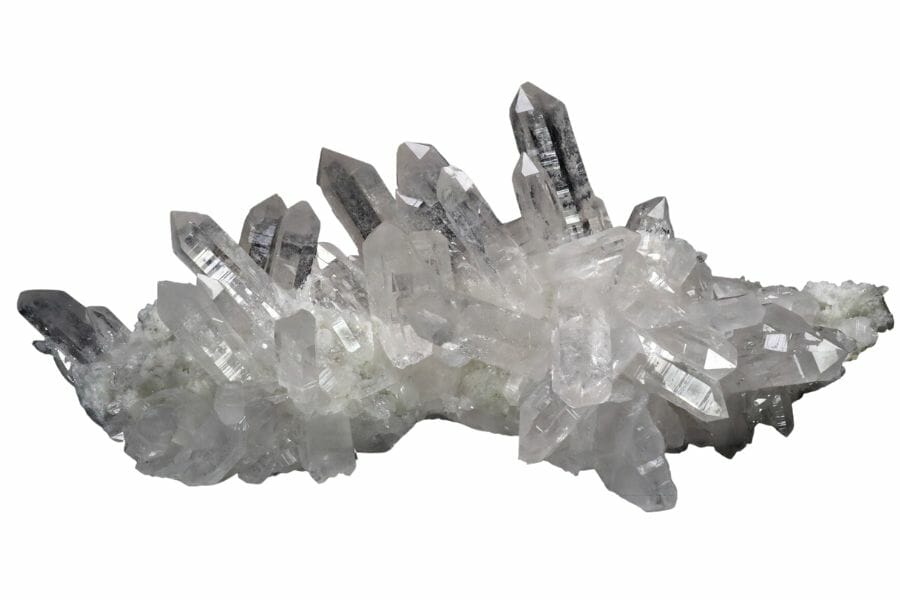Quartz, the gemstone that’s quite the belle of the ball, has been turning heads and catching eyes for centuries, and it’s not hard to see why. Whether you’re a jewelry lover or a mineral enthusiast, quartz has a special place in everyone’s heart. But have you ever wondered what makes quartz so darn valuable?
Quartz is no diamond in the rough but, as the saying goes, it’s not all about the Benjamins. It’s easily one of the more interesting and beautiful gems that you can easily find in many places.
Quartz comes in a dazzling array of colors, each with a unique charm. We’re talking about the elegant clear quartz, the beautiful rose quartz, and the mysterious smoky quartz, to name a few.
But what’s the secret sauce to this gem’s worth? Well, it’s a mixture of factors like availability, rarity, and of course, that ol’ thing called beauty. These sparkling stones don’t break the bank either, making them a pretty sweet deal for those looking to add a touch of glamour without putting a dent in their wallets.
As we dive into the fascinating world of quartz, we’ll explore its value, learn its pricing ins and outs, and uncover why this alluring gemstone is worth its weight in gold (figuratively, of course!).
What Quartz Is
Quartz is a versatile and abundant mineral of silicon dioxide found worldwide in various forms and colors. Renowned for its stunning beauty and durability, it’s commonly used in jewelry, home decor, and even high-tech applications like electronics and timepieces.
Below is a breakdown of quartz prices by type. These aren’t the only types, but they’re often the most common because of the many trace elements found in various forms of quartz.
Rose Quartz
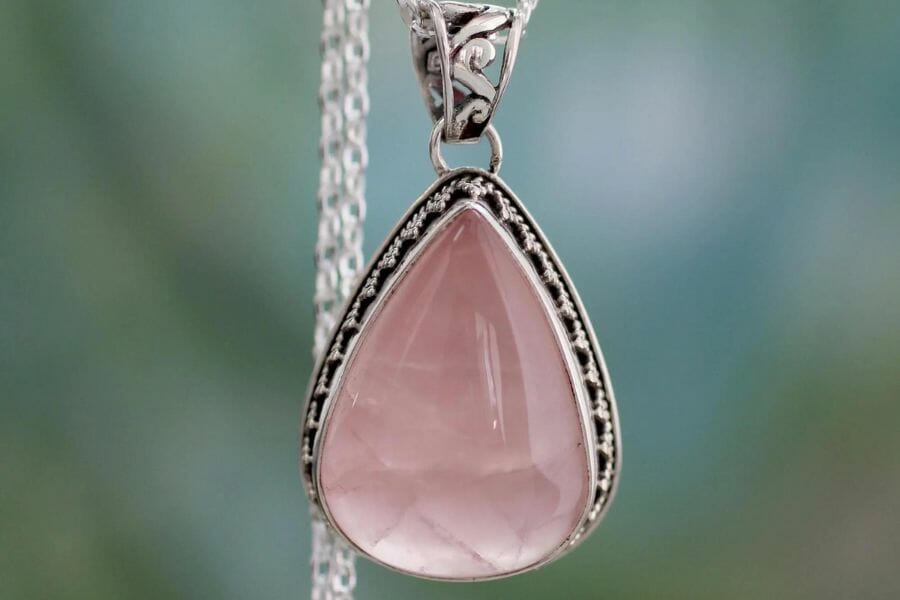
Rose quartz, affectionately known as the “love stone,” is a gorgeous variety of quartz that boasts a delicate pink hue, often associated with love, compassion, and healing. Its unique color is attributed to trace amounts of titanium, iron, or manganese.
Revered by many for its calming and soothing properties, rose quartz is a popular choice for jewelry, meditation tools, and ornamental pieces, capturing hearts and minds with its gentle, serene beauty.
How much is a rose quartz worth
The typical price range for rose quartz is around $1 – $14 per carat.
Pink Quartz
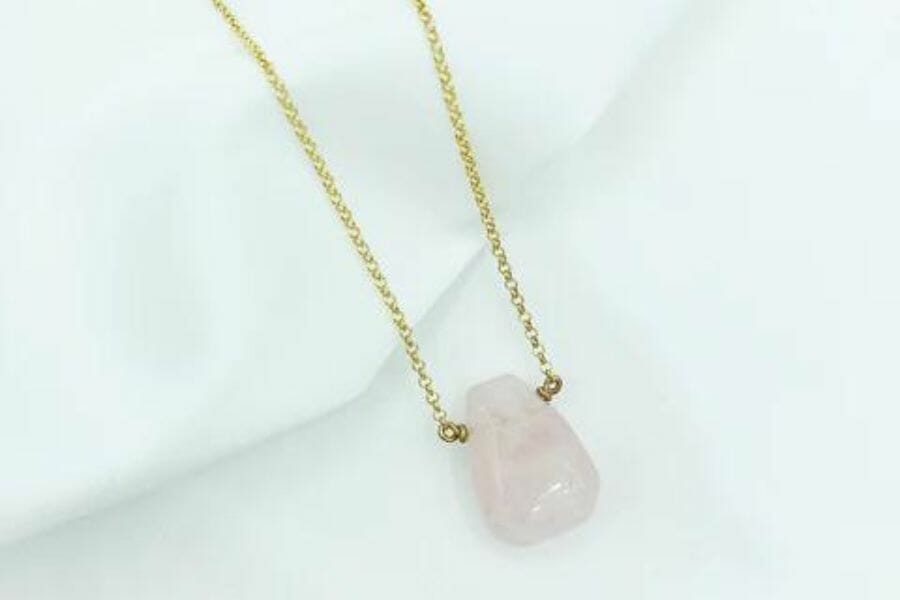
Often mistaken for rose quartz, pink quartz is a vibrant and eye-catching variety that showcases a more intense pink hue. Its color results from including tiny mineral fibers, typically dumortierite, intergrown within the crystal structure.
Prized for its striking appearance, pink quartz is sought-after in jewelry and home decor, bringing a bold, captivating touch to any collection or ensemble while retaining the durability and charm inherent to quartz gemstones.
How much is a pink quartz worth
Pink quartz, typically from $6 – $12 per carat, is among the most expensive.
Smoky Quartz
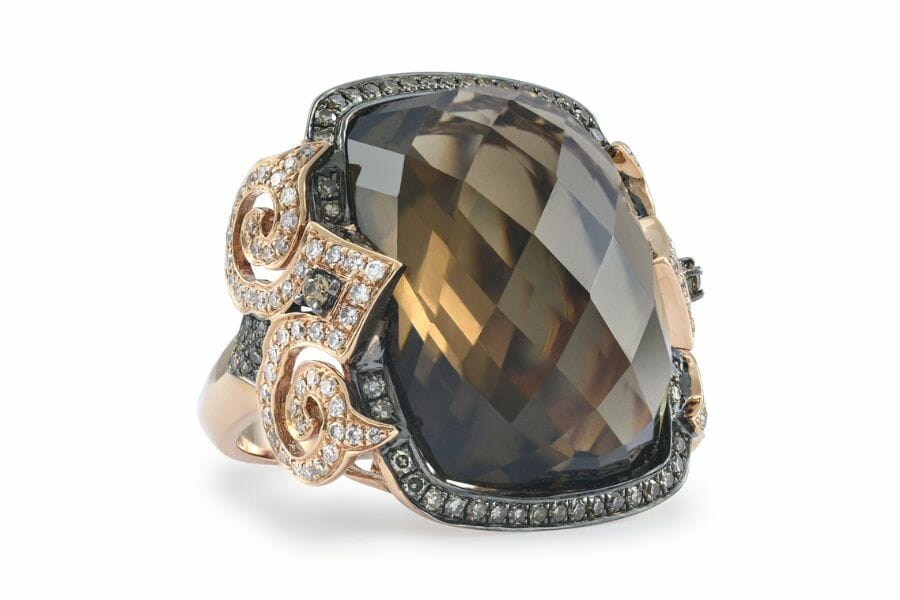
Smoky quartz is an alluring variety of quartz characterized by its captivating shades of brown and gray, produced by natural radiation from surrounding rock or exposure to gamma rays.
Known for its grounding and balancing properties, smoky quartz has been cherished as a talisman and decorative gemstone for centuries. Its rich hues add sophistication to jewelry designs and ornamental pieces, making it a prized choice for earthy, enigmatic beauty admirers.
How much is a smoky quartz worth
Smoky quartz can cost anywhere from $1 – $5 per carat.
Milky Quartz
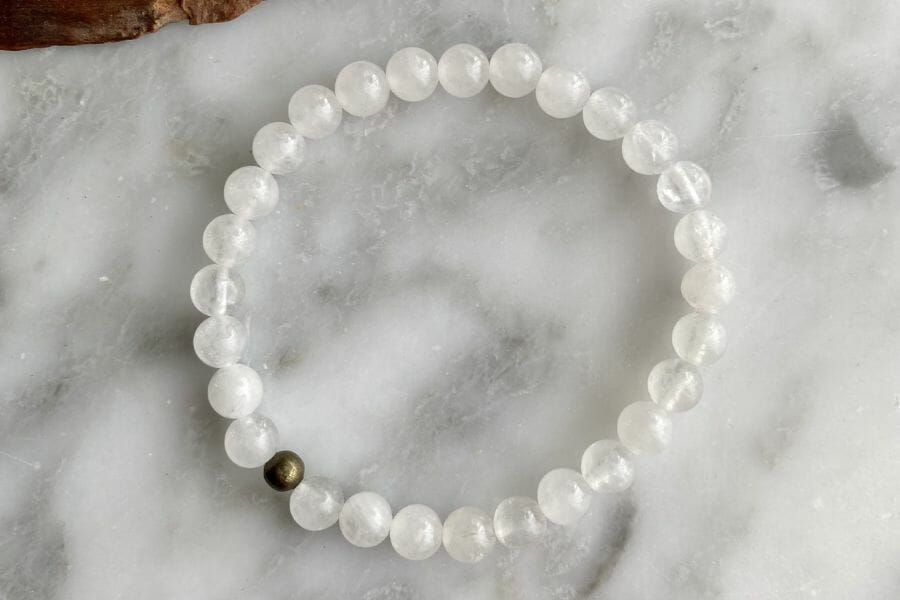
Milky quartz, also known as “snow quartz,” is a unique variety of quartz, distinguished by its translucent, cloudy white appearance. This enchanting gemstone evokes images of snow-capped mountains and frozen landscapes caused by microscopic gas and water inclusions within the crystal lattice.
While not as highly valued as its more transparent counterparts, milky quartz has an undeniable charm, often utilized in decorative objects and spiritual practices and as a more affordable option for jewelry enthusiasts.
How much is a milky quartz worth
There is a wide range of milky quartz quality. The pricing range per carat typically goes from $1 – $4.
White Quartz
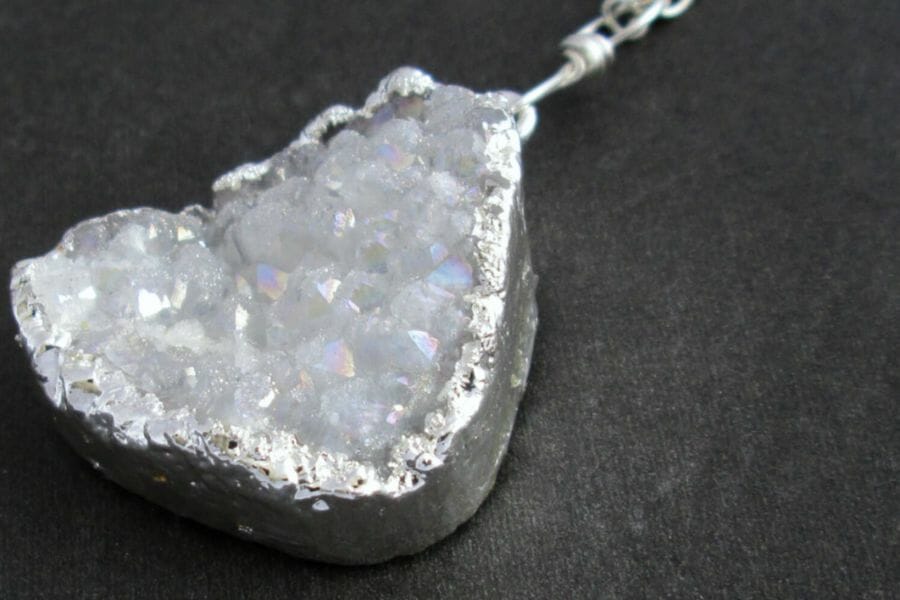
White quartz, a captivating variety, is prized for its brilliant, pure white hue and radiance. The pristine color results from microscopic inclusions, giving the gemstone a unique sense of depth.
With its timeless elegance and versatility, white quartz is a sought-after choice for jewelry, home decor, and spiritual practices. This stunning stone effortlessly adds a touch of sophistication and refinement to any setting or ensemble it graces.
How much is a white quartz worth
White quartz is frequently affordable. It typically sells between $2 – $3 per carat on average.
Clear Quartz
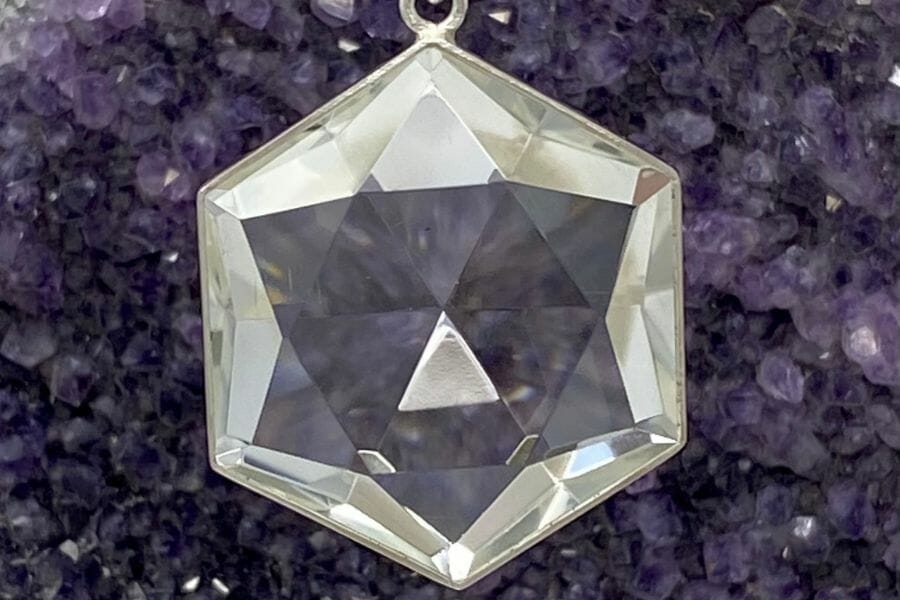
Clear quartz, often called “rock crystal,” is the purest variety of quartz, characterized by its remarkable transparency and crystal clarity. Formed without trace mineral inclusions, it’s revered for its versatile beauty and metaphysical properties, often associated with healing, amplifying energy, and spiritual growth.
A popular choice for jewelry and meditation tools, clear quartz brings a clean, luminous touch to any piece, embodying an ageless charm that captures the essence of light itself.
How much is a clear quartz worth
Clear quartz is a common type of quartz that is easily acquired in many places. It often sells from $1 – $2 per carat since it is so common. Larger crystals and clusters can be worth a lot more.
Why Quartz Is So Expensive
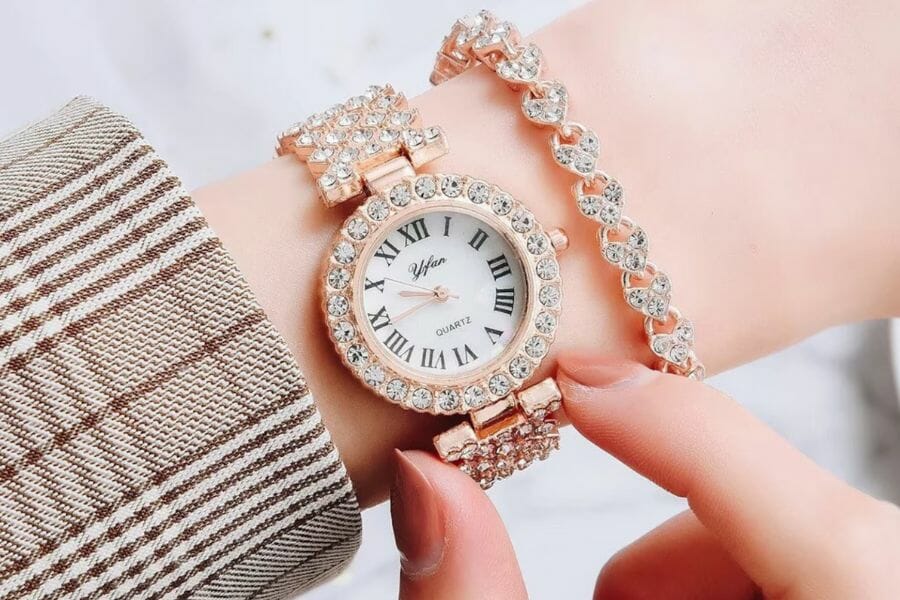
Quartz, a gemstone that has stood the test of time, continues to capture hearts and minds with its enchanting versatility and symbolic significance. From the snowy peaks of milky quartz to the pristine elegance of white quartz, there’s no denying this mineral has earned its place in the annals of treasured gemstones. Let’s explore why quartz remains highly valued across various cultures and disciplines.
The dazzling array of colors and varieties that quartz offers is one of the key factors contributing to its appeal. From the soothing rose quartz, often associated with love and compassion, to the smoky grounding quartz, this gemstone never ceases to amaze with its ability to resonate with individuals personally. Each variety, boasting its unique charm, allows self-expression, creating a meaningful connection between the wearer and the stone.
Another reason for quartz’s unwavering popularity is its durability. Ranking 7 on the Mohs scale of mineral hardness, quartz is resistant to everyday wear and tear, making it an ideal choice for jewelry and decorative pieces that can withstand the test of time.
The rich history and symbolism associated with quartz only add to its value. For centuries, quartz has been revered for its metaphysical properties, with various cultures attributing healing and spiritual benefits to the gemstone, elevating it beyond mere aesthetic beauty.
Don’t worry if you’re not sure if what you have is quartz because it also happens to a lot of people. Look at our helpful guides below to help you confidently identify quartz:
How To Determine The Value Of Quartz
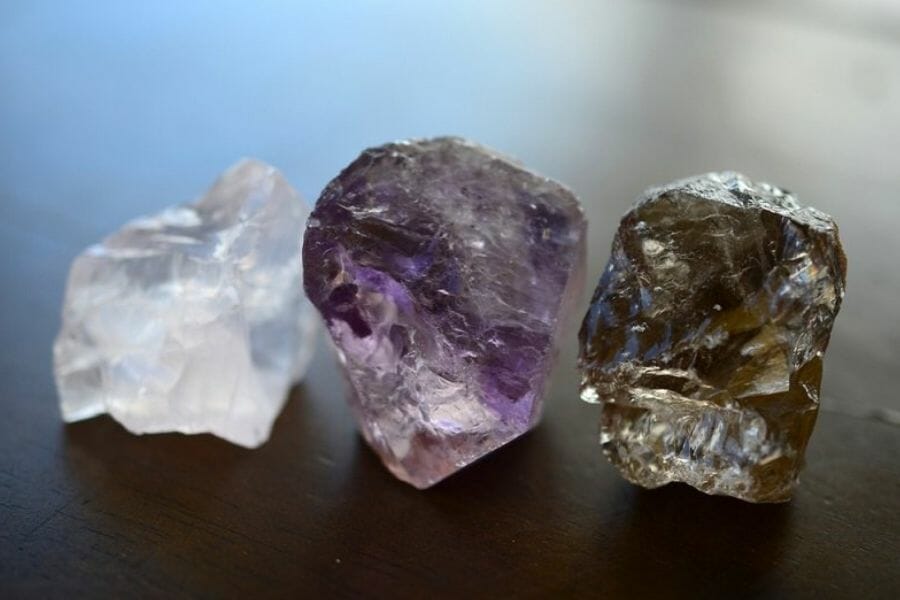
A few essential factors typically determine the price of any given piece of quartz:
Color
The hue and saturation of quartz significantly impact its value. Vibrant, even, and saturated colors are typically sought-after and command higher prices, while pale or unevenly colored stones may be less expensive.
Clarity
Clear, transparent quartz varieties like rock crystal are more valuable than cloudy or heavily included specimens. Fewer inclusions and high transparency contribute to the gemstone’s overall visual appeal and increase its price.
Size and weight
More significant, heavier quartz pieces tend to be rarer and more valuable, as they require more time and specific conditions to form. Consequently, more giant stones usually fetch higher prices.
Shape and cut
A well-proportioned, skillfully cut quartz piece will reflect light beautifully, enhancing its overall appearance and value. Custom or unique cuts can also increase the price, as they require specialized skills and labor.
Rarity
Some quartz varieties, like rare colors or unique crystal formations, are more scarce and command higher prices due to their rarity and collectors’ demand.
Treatment
Untreated, natural quartz typically holds a higher value than treated stones, as collectors and connoisseurs generally prefer natural gemstones. Treatments such as irradiation or heat treatments, which can improve the color or clarity, should be disclosed and may affect the price.
Origin
In some cases, the provenance of a quartz piece can influence its price. Gemstones from specific locations with a reputation for high-quality quartz, or those with a fascinating history or story, may carry a premium.
Market demand
Current market trends and demand can also influence the price of quartz. Fashion trends, for instance, may temporarily reduce the price of a specific color or variety.
Quartz Price By Type
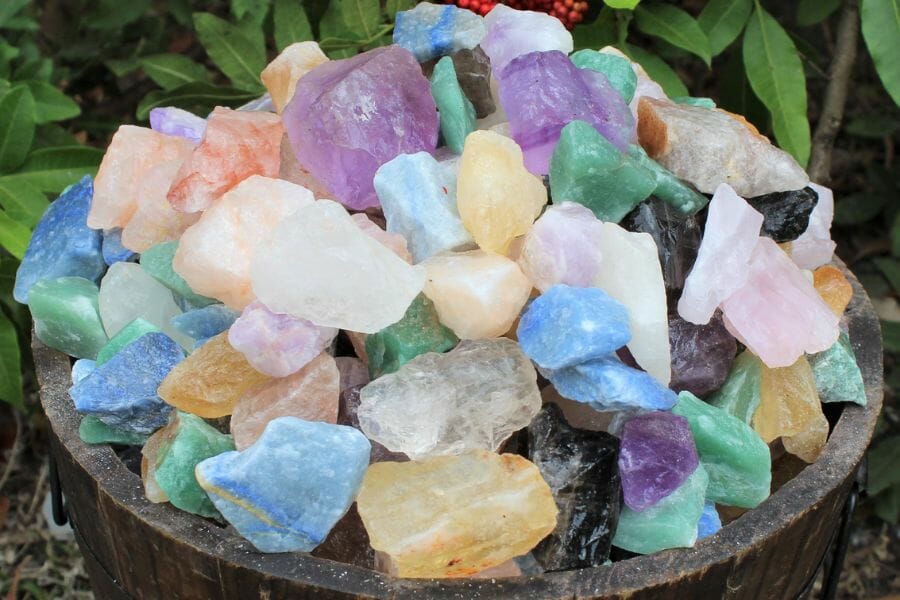
The value and price of quartz can be determined by knowing the factors. This lists the most common quartz types, colors, and current pricing.
Quartz values by color/type
| Color/Type | Location | Price (Per Carat) |
| Rose Quartz | Any | $1 – $14 |
| Pink Quartz | Any | $6 – $12 |
| Smoky Quartz | Any | $1 – $5 |
| Milky Quartz | Any | $1 – $4 |
| White Quartz | Any | $2 – $3 |
| Clear Quartz | Any | $1 – $2 |
The value and cost of different quartz colors and varieties vary considerably. Let’s calculate the quartz cost of other units.
Quartz pricing by unit of measurement
| Measurement | Price |
| A carat of quartz | $1 – $14 |
| A gram of quartz | $5 – $70 |
| An ounce of quartz | $140 – $1980 |
| A kilogram of quartz | $5,000 – $70,000 |
| A pound of quartz | $2,270 – $31,750 |
| A ton of quartz | $4,535,930 – $63,502,950 |
The Most Expensive Quartz
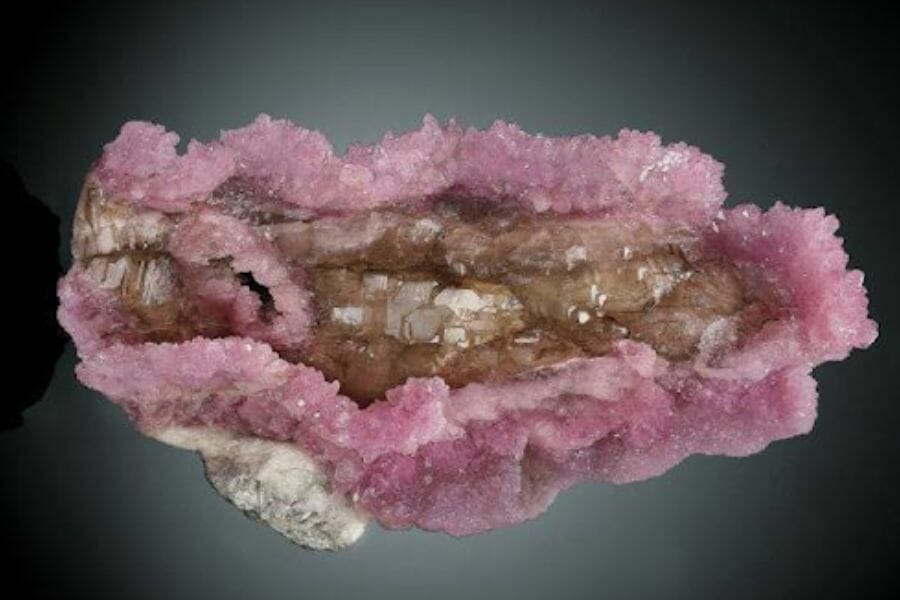
The most expensive quartz was the “La Madona Rosa” or the “La Madonna Rose.” La Madonna Rose is a huge mass of smokey quartz crystals encircled by a halo of rose quartz that is pink in color. The whole specimen is roughly 8 inches broad and 15 inches tall. It fetched $550,000 at auction in 2013.
The name La Madona Rosa translates to “The Pink Madona.” The crystal specimen resembles conventional images of the Virgin Mary very closely.
How To Get An Appraisal On Your Quartz
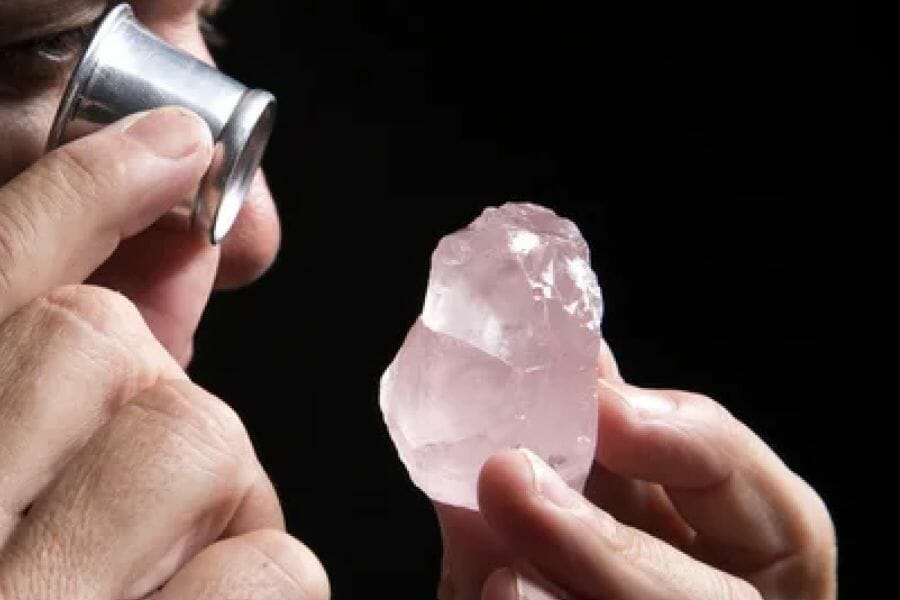
To get an appraisal for a quartz piece, whether it’s a loose gemstone, a piece of jewelry, or a mineral specimen, you should find a reputable gemstone or jewelry appraiser in your area, preferably one that is certified by a major organization like the GIA.
During the appraisal, the appraiser will examine the quartz using various tools and techniques to determine color, clarity, cut, and carat weight (for gemstones). They will also consider factors such as rarity, provenance, and market demand.
Once the appraisal is complete, the appraiser will provide a written report outlining their findings and assigning value to your quartz piece. This report can be used for insurance purposes, resale, or simply for your records.
Remember that the appraised value may differ depending on the purpose of the appraisal, such as for insurance replacement or fair market value. Always communicate your needs to the appraiser to ensure you receive the most accurate and relevant information.

